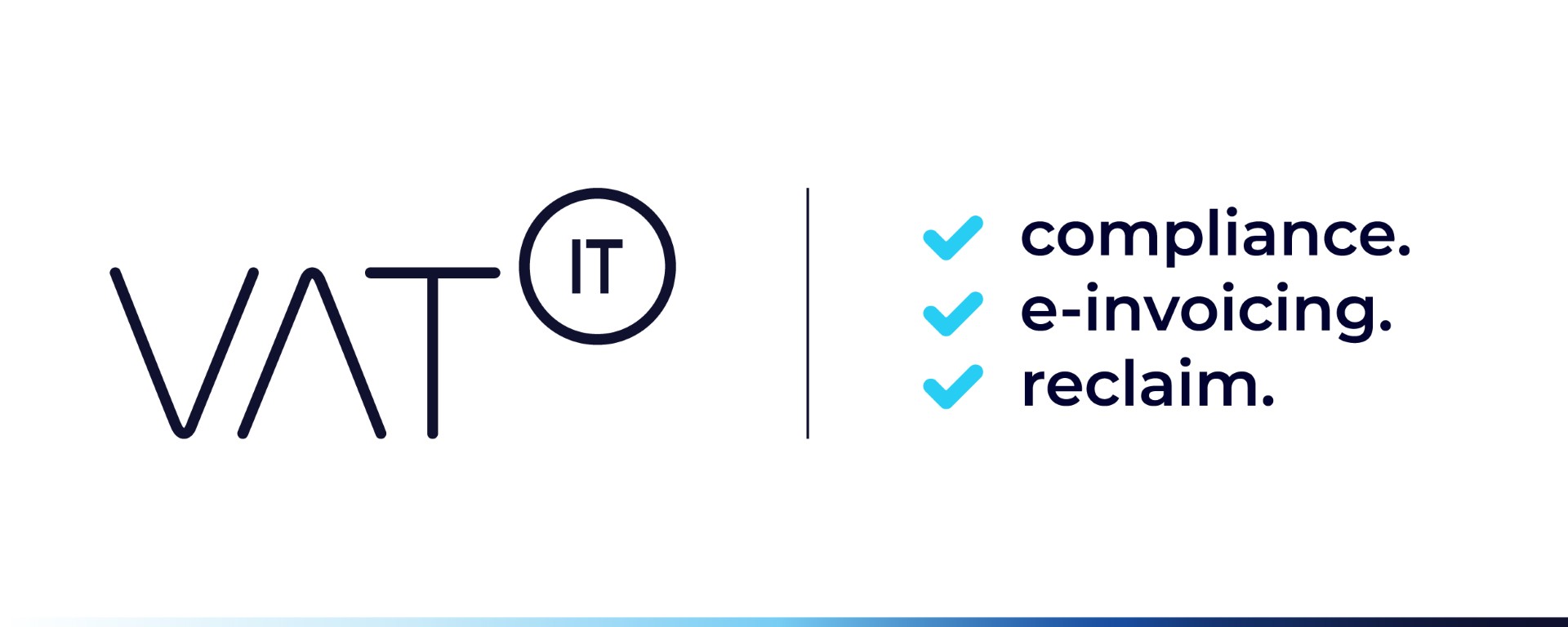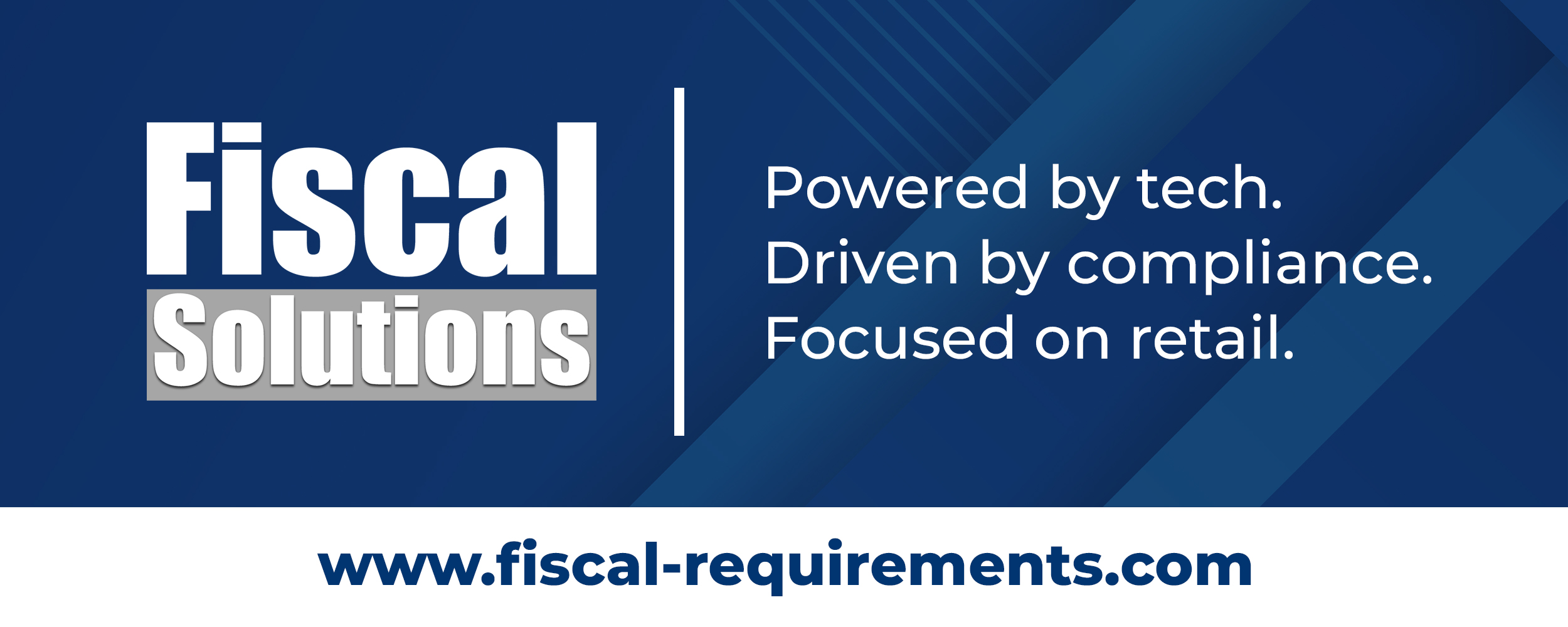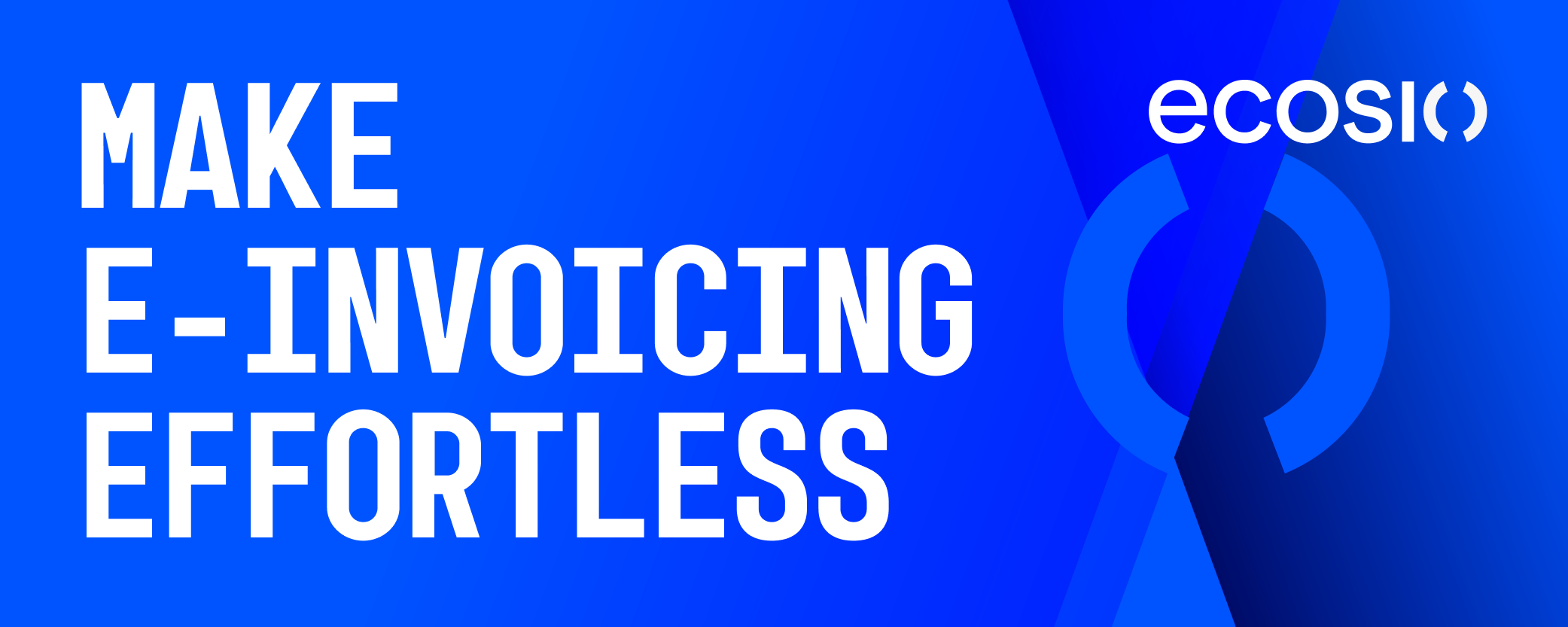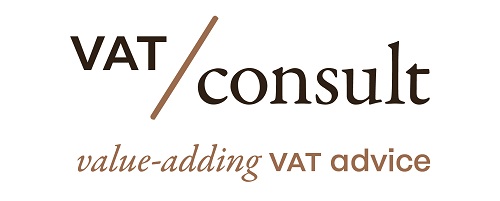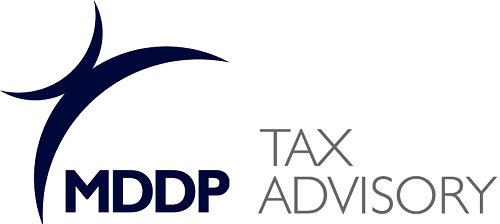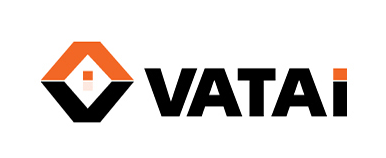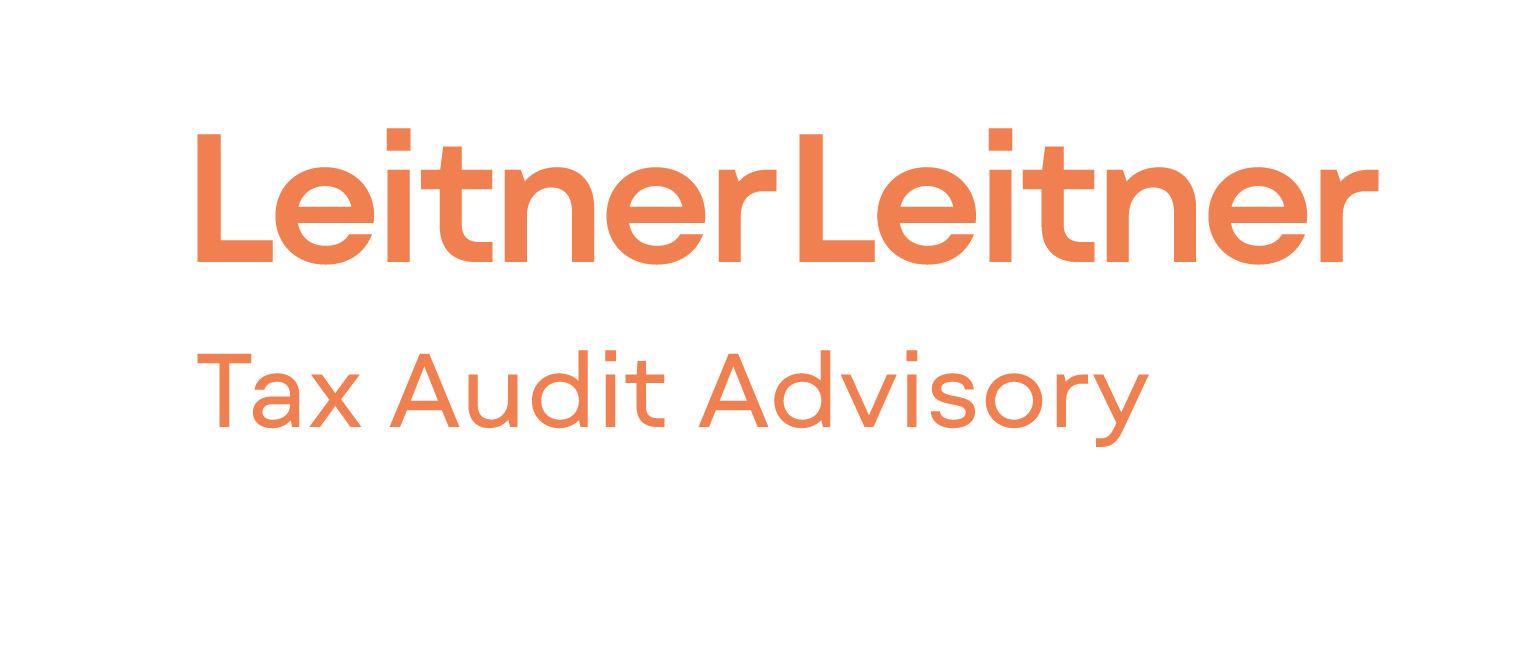SUMMARY
Digital Reporting Requirements (DRR) under EU VAT in the Digital Age (ViDA)
VAT in the Digital Age (ViDA) is a major EU VAT reform adopted in March 2025, and its first pillar – the Digital Reporting Requirements (DRR) – fundamentally changes how VAT data is invoiced and reported across the EU. DRR introduces mandatory electronic invoicing and nearly real-time digital reporting for B2B transactions, especially cross-border sales, to combat fraud and simplify compliance. In essence, it replaces the current periodic VAT reporting (like quarterly returns and EC Sales Lists) with a transaction-by-transaction reporting system where invoice data is shared with tax authorities almost immediately. Below is a comprehensive overview of how the DRR system works, the implementation timeline, and specific obligations and technical requirements: [zampapartners.com], [pwc.lu]
How the DRR System Works (Core Mechanisms)
Under DRR, every intra-EU B2B transaction must be accompanied by a structured e-invoice and a prompt digital report of its details to tax authorities. The core features include:
-
Mandatory E-Invoicing for Cross-Border B2B: From the DRR implementation date, any sale of goods or services between businesses in different EU countries must be invoiced electronically in a standardized format. Paper or PDF invoices alone will no longer suffice for these transactions – only a structured electronic invoice (meeting the European standard EN 16931) will be considered valid. This means companies must use machine-readable invoices (e.g. XML) that contain all required data fields. Traditional invoices (including PDFs) will be relegated to optional copies, not the official tax invoice. [zampapartners.com], [vatcalc.com] [vatcalc.com]
-
Near Real-Time Reporting: Invoice data must be transmitted to tax authorities shortly after issuance – essentially in real time or within days. The final rules allow up to 10 days from the taxable event to issue and report an invoice, but many Member States may enforce an even shorter window (the European Commission originally proposed 2 days). In practice, this means when a business issues an invoice, it will simultaneously (or within a couple of days) send a digital record of that invoice to its national tax authority. Likewise, the buyer may need to acknowledge or report the purchase within a few days of receipt. Tax authorities therefore receive transaction-level data almost immediately, rather than waiting for month-end declarations. This continuous reporting replaces the monthly/quarterly EC Sales List – instead of summary lists, each transaction is reported individually. [vatcalc.com], [pwc.lu] [vatcalc.com]
-
Automated Cross-Checking (Central VIES): Once Member States receive these invoice reports, they will share them via a central EU system (an expanded VIES database) to cross-match sales and purchases. For example, France will forward data about a French supplier’s sale to a German buyer, and Germany will match it with the buyer’s reported purchase. Any discrepancies (e.g. a sale reported with no corresponding purchase, or mismatched amounts) can be flagged automatically, enabling tax authorities to detect fraud or errors quickly. This automated matching of invoices between countries is a cornerstone of DRR’s fraud-fighting mechanism, targeting VAT evasion like missing trader (carousel) fraud. [vatcalc.com], [vatcalc.com] [vatcalc.com]
-
No Tax Authority Clearance Required: The EU model is “post-audit” rather than “clearance.” Invoices will flow directly from supplier to buyer without needing prior approval by the tax authority. In other words, a vendor can issue an e-invoice to the customer immediately, and send the data to the tax authorities in parallel – there is no need to wait for the tax administration to clear or validate each invoice before it’s valid. ViDA actually prohibits Member States from imposing any kind of pre-issuance authorization for invoices. (Notably, countries like Italy that have had clearance e-invoicing must dismantle those requirements by 2035.) This ensures that business transactions are not delayed by government systems: the reporting runs in parallel, not as a gatekeeper. [vatcalc.com]
-
Rich Data Content: The DRR system requires more detailed invoice information to be reported than before. Invoices will need to include additional fields so that the transmitted data is useful for tax control. Notably, ViDA adds requirements to list the original invoice number on any correcting invoice, i.e. credit or debit notes must reference the invoice they adjust. Also, businesses must include their bank account (IBAN) details and payment due date on invoices. These fields (mandated by 2028) help authorities track payment flows and link related documents. All the necessary data points – seller and buyer VAT IDs, invoice number and date, taxable amount, tax rate, etc., plus those new fields – are transmitted as part of the electronic report. In effect, tax authorities will receive a complete, line-item snapshot of each invoice, enabling them to reconstruct each business’s sales and purchases. [vatcalc.com]
-
Scope – Focus on Cross-Border B2B: DRR primarily covers intra-EU B2B transactions – i.e. sales of goods shipped to another Member State, and services supplied to business customers in other Member States (which are typically subject to reverse-charge VAT). These are the transactions currently listed in EC Sales Lists, and under DRR they will all be e-invoiced and reported in real time. Additionally, certain domestic transactions by foreign suppliers (those where a non-established supplier sells locally and the reverse charge applies, see below) will also be included in the DRR reporting system so they don’t slip through the cracks. Purely domestic B2B transactions (where both supplier and customer are in the same country) are not mandated by the EU to be in DRR, but Member States may choose to extend similar digital reporting to them (more on that later). B2C sales remain outside the scope of DRR – consumer sales will continue to follow existing rules (with separate ViDA measures for platforms and OSS), since the emphasis of DRR is on the B2B supply chain where VAT fraud risk is highest. [pwc.lu]
In summary, DRR creates a unified “live” VAT reporting system across the EU: whenever a business in one Member State sells to a business in another, a standard e-invoice must be issued and both sides report the transaction data to their tax authorities within days. Tax authorities receive and share this data, and can cross-verify the VAT declarations almost instantly. This marks a shift from periodic reporting to transaction-based reporting, leveraging digital technology to make VAT collection more efficient and fraud-resistant. [zampapartners.com], [vatcalc.com]
Timeline for Implementation Across EU Member States
The rollout of DRR and related ViDA measures is phased over the coming years, giving businesses and tax administrations time to adapt. Key milestones include:
-
April 2025 – Legal Changes Begin: ViDA’s legal acts enter into force on 14 April 2025. From this point, Member States are allowed to mandate domestic e-invoicing without needing special approval from the EU, and customers can no longer refuse e-invoices. (Previously, EU law required buyers’ consent and Commission permission to impose e-invoicing; those obstacles are removed immediately.) This means starting mid-2025, countries like France, Poland, or Belgium can proceed with planned domestic e-invoice requirements under the new framework. Many countries are expected to introduce domestic B2B e-invoicing mandates in 2024–2026 now that it’s legally permitted. [dynatos.com] [dynatos.com], [vatcalc.com] [vatcalc.com]
-
By End of 2026 – Directive Transposition: Member States must transpose the ViDA Directive into national law by 31 December 2026. During 2025–2026, detailed implementing rules (including a possible Commission implementing regulation specifying data formats) will be developed. Businesses should use this lead time to start updating their systems, knowing the broad requirements are set.
-
1 July 2028 – Single VAT Registration Measures: Several reforms kick in mid-2028 to reduce the need for multiple VAT registrations. Most relevant, a mandatory domestic reverse-charge starts applying on 1 July 2028 for B2B supplies by non-established, non-registered suppliers. In other words, if a supplier from country A sells in country B without a VAT number or establishment there, country B will make the customer account for the VAT (reverse charge). This is part of the Single VAT Registration pillar but ties into DRR because those transactions will be reported digitally (treated akin to cross-border). Additionally, the OSS (One Stop Shop) system is expanded in 2028 to cover movements of own goods and other transactions to further minimize foreign VAT registrations. (Note: Platform economy rules on deemed supplier also become optional in 2028 and mandatory by 2030, but that’s separate from DRR.) [zampapartners.com], [pwc.lu] [zampapartners.com]
-
1 July 2030 – DRR “Go Live” for Cross-Border Reporting: This is the big bang date. From July 2030, all intra-Community B2B supplies of goods or services must be e-invoiced and reported under the new DRR system. Electronic invoicing and digital reporting become mandatory for cross-border transactions EU-wide. This will coincide with the end of EC Sales Lists: the existing requirement for summary listings is abolished, as DRR replaces it. From this date, a French company selling to Germany, a Czech company selling to Italy, etc., all must use structured e-invoices and transmit the data within the allotted time. (Domestic transactions still depend on national decisions as noted.) Businesses need to be fully ready by this date, with compliant invoicing software and reporting connections in place. [zampapartners.com], [pwc.lu]
-
1 January 2035 – Full Harmonization: Countries that already had e-invoicing/reporting systems before ViDA (like Italy’s SdI, or planned ones in France, Poland) are given until the end of 2034 to align with the new EU standards. By 1 Jan 2035, all Member States must have harmonized their digital reporting to the common EU format and rules. This grace period allows, for example, Italy to transition its system to meet the no-clearance requirement and EN16931 format by 2035. It ensures that, ultimately, there is a single harmonized approach across the EU, even if some countries phased in domestic mandates earlier. 2035 is effectively the end of the transition period – from then on, any remaining national peculiarities should be gone. [zampapartners.com]
Timeline Summary: ViDA was adopted in March 2025 and took effect in April 2025, immediately removing legal barriers to e-invoicing. The next few years (2025–2029) are a ramp-up period: Member States will introduce domestic systems and the EU will refine technical details. The core DRR obligation hits in July 2030, requiring cross-border e-invoicing/reporting. And by 2035, all EU countries’ systems converge to the unified model. Businesses should track national implementation plans during 2025–2030 (since some countries may mandate e-invoicing for domestic transactions before 2030) and use the interim period to upgrade systems, pilot e-invoices, and ensure compliance in advance of the 2030 deadline. [dynatos.com] [zampapartners.com]
Obligations for Established vs Non-Established Entities
ViDA’s reforms, including DRR, distinguish between businesses that are established or VAT-registered in a Member State and those that are not. The obligations and VAT accounting shift depending on a supplier’s status in the country of taxation:
-
If the supplier is established in the country of sale: The supplier continues to charge local VAT and report the sale on its domestic VAT return (if it’s a domestic sale). For intra-EU sales, an established business will use its home country’s VAT number and the new DRR system to report those exports. There is no change in who accounts for the VAT on domestic sales – the local supplier does. DRR doesn’t directly impose reporting on purely domestic transactions EU-wide, so an established business will only be caught by DRR for its cross-border B2B sales (for which it must issue e-invoices and report data via its home country’s system). For example, a company established in France selling to Germany reports that sale through France’s reporting portal. Its domestic French sales are not subject to EU-level reporting obligations (but France might implement similar domestic reporting under the same model). In short, established businesses will handle compliance from their country of establishment for cross-border trades, and domestic compliance remains as is (unless changed by national law). [pwc.lu]
-
If the supplier is not established in the country of sale: Starting in 2028, the default rule will be that the business customer must account for the VAT via reverse charge whenever the supplier has no establishment and no local VAT registration in that Member State. This mandatory reverse-charge mechanism means a foreign supplier selling B2B into a country no longer needs to register for VAT or charge local VAT, so long as the customer is a taxable person. The obligation to report that transaction falls partly on the customer (who will include it as an acquisition on their VAT return and, under DRR, will report the purchase in their local DRR system). The foreign supplier, not being “identified” locally, would not file local VAT returns; however, the supplier still must issue a proper invoice (an EU e-invoice by 2030) and report the sale via DRR in its own country (or via a special scheme) if it has one. For instance, suppose a Belgian company (no establishment or VAT number in Spain) provides a service to a Spanish business. Under the new rules, the Spanish customer will reverse-charge the VAT – the Belgian supplier doesn’t register for Spanish VAT. The Belgian will report the sale through Belgium’s system (as a cross-border service) and the Spanish customer reports the purchase through Spain’s system, allowing the cross-check. Thus, non-established suppliers get relief from VAT registration obligations, with the tax collection shifting to the buyer. [pwc.lu] [zampapartners.com], [pwc.lu]
-
If the supplier is not established but is VAT-registered in the country: Some foreign businesses have voluntary or prior VAT registrations in countries where they aren’t established. In these cases, the supplier is technically a “taxable person identified for VAT” in that country. The new mandatory reverse-charge applies specifically to suppliers not identified in the country. So if a foreign company maintains a local VAT number, it must follow the normal rules (charge VAT on local sales, report via local returns) and would also use the local DRR system for any in-scope transactions under that VAT number. In other words, having a local VAT registration means you are treated like a domestic taxpayer – the simplification of shifting the VAT to the customer wouldn’t automatically apply. Many businesses in this situation might reconsider the need for those registrations: since after 2028 their customers could self-account for the VAT, the foreign supplier could deregister and avoid that compliance burden. But if they keep the VAT number, they’re expected to use it and comply like an established entity (issuing local VAT invoices, etc.). [pwc.lu]
-
Impact of a Fixed Establishment: A fixed establishment (FE) is a permanent business presence in another country (short of a head office). If a supplier has an FE in the customer’s country, and the FE is involved in the sale, then for VAT purposes the supplier is considered established in that country for that transaction. That sale is treated as a domestic transaction carried out by the local FE, not an intra-EU supply. In practice, this means the supplier with the FE must charge local VAT to the customer (reverse-charge wouldn’t apply because Article 194’s mandatory reverse-charge is only when the supplier has no establishment). It also means the transaction would not be reported via the cross-border DRR system; instead it falls under whatever domestic invoice/reporting rules exist. For example, a German company with a fixed warehouse in Italy (thus Italian VAT-registered) selling from that warehouse to Italian clients will treat those sales as Italian domestic sales (Italian VAT charged, and if Italy has domestic e-invoicing, comply with that). If the same German company sells from Germany to Italy (no Italian FE involved), that’s an intra-EU supply reported through DRR. Thus, having a fixed establishment in the buyer’s country shifts the obligation – you must handle VAT locally through that establishment rather than using the cross-border mechanism. Businesses will need to clearly identify when an FE is making the supply, because it changes the compliance path. In summary: No FE in buyer’s country = seller is non-established, likely zero-rate and use DRR; FE in buyer’s country = seller is effectively local, charge local VAT (or reverse charge might not apply) and DRR isn’t used because it’s not an intra-EU supply.
To put it simply, ViDA is trying to simplify cross-border trade compliance: if you’re not established in a country, you shouldn’t have to register just to pay its VAT – instead the local customer or a special OSS return covers it. The DRR reporting is then done by the supplier in its home jurisdiction (or via OSS) and by the customer in their jurisdiction, rather than forcing the supplier into the customer’s system. However, if you do have a local presence (establishment or VAT number), you continue to operate within that local VAT system. The new rules encourage use of one primary VAT registration where possible (hence “single VAT registration”), leveraging reverse-charge for other countries. [pwc.lu]
Impact of Having (or Not Having) a VAT Number in a Member State
Closely related to the above, ViDA explicitly addresses whether a supplier is “identified for VAT” in the country of supply:
-
If a business has a VAT number in the customer’s country, even if it’s not physically established, then it is considered a taxable person in that country. In such cases, the mandatory reverse-charge rule (Article 194 as amended) does not force the VAT onto the customer. The supplier would invoice with local VAT using its local VAT ID and report the sale via local returns (because the supplier is VAT-identified there). In terms of DRR, that transaction would be treated as domestic for that country’s system (and only reported if the country extends DRR to domestic trades). Essentially, having a VAT number means you’ve opted into that country’s normal regime, so ViDA’s simplification doesn’t apply. [pwc.lu]
-
If a business does not have a VAT registration in the customer’s country (and no establishment), then it is a “non-identified” supplier and triggers the new mandatory reverse-charge. The supplier would not charge VAT, and the customer must self-account. The supplier likely would report the sale through the DRR system of whatever country it is established or identified in (e.g. its home country, or possibly through a One Stop Shop return if using the upcoming OSS expansion for B2B). Not having a local VAT ID thus shifts the VAT reporting entirely to the DRR channel and the customer’s VAT return, relieving the supplier of direct tax payment in that jurisdiction. [pwc.lu]
In practical terms, businesses currently holding multiple EU VAT numbers may drop some of them once these rules kick in, since a VAT registration could become optional rather than necessary. For example, a U.S. company selling only B2B in the EU might choose to register in just one Member State (or none, using an intermediary or OSS) and make all other sales under reverse-charge to customers – significantly simplifying its VAT admin burden.
Important: Regardless of establishment or VAT registration, the obligation to issue an invoice and to comply with DRR for cross-border transactions remains. A non-established, non-registered company must still issue a valid VAT invoice (it will just show “reverse charge” or “VAT zero” as applicable) and it may have to report that invoice in an OSS or other mechanism so that the data enters the system. ViDA’s Council Regulation amendments figure out how entirely foreign suppliers’ data get captured. In many cases, the buyer’s report of an acquisition will be the primary record if the seller isn’t in any EU system. But for EU-established suppliers, they will always report their side via their home tax authority.
Bottom line: If you operate in a country, ViDA doesn’t change much (you keep charging VAT); if you’re a foreign supplier with no local VAT ID, the compliance shifts to your customer for tax payment, and you just ensure the sale is properly invoiced and reported through the new digital system. This reduces duplicate reporting and VAT registrations across the single market.
Format Requirements for E-Invoices under DRR
ViDA makes electronic invoicing the new norm, with specific standards to ensure interoperability and automatic processing. Key format and content requirements include:
-
Structured Electronic Format (EN 16931 Standard): An **“electronic invoice” is now defined strictly as a document issued and received in a **structured format that allows automatic processing. In practice, this means invoices must be in a standardized data file format (XML or similar) conforming to the European standard on e-invoicing (EN 16931). Unstructured formats like PDF or paper scans will no longer count as valid e-invoices for VAT purposes in cross-border trade. Many companies will use formats like UBL 2.1 or UN/CEFACT XML, which are aligned with EN 16931. The goal is that any invoice issued in one EU country can be automatically read and imported in another country’s systems with no re-keying. This standardization ends the patchwork of national formats. By 2030, if you send just a PDF to an EU business customer, it will not be a legally sufficient invoice – you’ll need to send the mandated structured data (possibly alongside a PDF copy for human readability). [vatcalc.com] [vatcalc.com], [vatcalc.com] [vatcalc.com]
-
No Buyer Consent Needed: As of 2025, buyers cannot refuse electronic invoices. ViDA removed the prior requirement of buyer acceptance (Article 232 of the VAT Directive was deleted). This means a supplier is free to issue only e-invoices and that is legally valid even if a customer would have preferred paper. For cross-border transactions under DRR, e-invoicing is compulsory by law, so there is no question of consent. This change was implemented immediately to pave the way for broad e-invoicing adoption. Businesses can now standardize on e-invoicing for all B2B sales without managing customer-by-customer preferences. [vatcalc.com]
-
Uniform Content Requirements: ViDA updates the required fields on a VAT invoice (Article 226 of the Directive) to support the needs of digital reporting. Two notable additions effective from 2028:
- Invoices must include the “supplier’s bank account number (IBAN) for the payment”. This lets authorities monitor where payments go, adding an audit trail for VAT refunds and fraud detection. [vatcalc.com]
- Invoices must show the payment due date or schedule. This is useful for cash-flow analysis and potentially for cross-checking if payments align with invoice claims. [vatcalc.com]
- Also, as mentioned earlier, any corrective invoice must reference the original invoice’s sequence number. This linkage is now mandatory, ensuring that credit notes can always be matched to the initial invoice in the systems.
Other standard fields remain (supplier and customer VAT IDs, invoice date, taxable amount, tax rate, etc.). All these data points are part of the schema that will be reported under DRR. Essentially, the invoice itself serves as the source of truth for reporting, so it needs to contain everything regulators require. -
Invoice Issuance Deadlines: To facilitate timely reporting, invoices must be issued promptly after the taxable event. The general rule will be within 10 days of the supply (or payment) for cross-border B2B invoices. This is a tightening from the old rule (which allowed until the 15th of the following month). If an invoice isn’t issued in time, the reporting deadline still kicks in based on when it should have been issued. Also, summary invoices (combining multiple transactions) are largely curtailed; if allowed at all, they must adhere to strict timing (e.g. one per month issued by the 10th of next month). The idea is to have a one-to-one link of transactions to invoices to reports. [vatcalc.com]
-
Interoperability and National Formats: Member States must accept the common EU e-invoice format for cross-border dealings. They are not allowed to require businesses to use a proprietary domestic format for DRR purposes. Many countries will adapt their domestic standards to align with EN 16931. There is flexibility in syntax (different XML formats as long as they fit the standard’s data model). The EN 16931 standard was originally for public procurement invoices, and now it becomes the backbone for B2B as well. This also means if a Member State builds a national e-invoicing portal or platform, it must be able to ingest and produce invoices in the EU standard format.
-
Transition for Domestic Invoices: Until 2030, domestic B2B e-invoicing mandates can use national formats, but by 2035 they too must align with EN 16931. After 2030, any new cross-border invoice must be in the standard format. Small exceptions aside (like certain derogations for businesses with no electronic means), paper invoices will effectively disappear for B2B within the EU. Companies should plan to maintain electronic archives of invoices, as digital storage requirements remain (typically ~10 years retention, depending on country). [zampapartners.com]
In summary, businesses will need to upgrade their invoicing systems to produce compliant e-invoices. For many, this means implementing an e-invoicing software or service that supports the EU standards. While this is a significant change, it also offers benefits: a single invoice format for all EU trade can streamline accounting and reduce errors. Additionally, by embedding more information (like bank details) on invoices, businesses might see smoother payment reconciliation and fewer queries from customers. The invoice becomes not just a request for payment, but a rich data document that feeds both parties’ VAT reporting systems automatically.
Protocols for Transmission of Data to Tax Authorities
Alongside the invoice format, DRR sets out how the invoice data gets to tax authorities:
-
Decentralized yet Harmonized Reporting: Each Member State will implement its own digital reporting portal or API for businesses to submit invoice data. Suppliers will transmit the required invoice details (in the standard format) to their national tax authority’s system electronically. This can be done in real-time or in batches, but always within the tight deadline (a few days). Many countries are expected to provide online platforms and possibly integrate with existing invoicing networks. While the infrastructure is run nationally, the data collected is shared across borders: as noted, all Member States forward the data to a central EU database shortly after receipt. This ensures the buying country’s tax authority also gets the info. The result is a federated system – you report to your authority, and behind the scenes the data flows to where it needs to go. [vatcalc.com]
-
Transmission Channels (APIs and Networks): The law itself doesn’t lock in one technical channel, but it emphasizes no prior approval (so the transmission is a separate flow, not a clearance checkpoint). Many companies will connect via API to tax authority systems to send invoice data automatically from their ERP software. Others might use secure file upload or approved intermediaries. A likely common solution is the use of Peppol, a pan-European e-invoicing network, to deliver invoices and data. Indeed, many Member States (e.g. France, Netherlands, Belgium) are considering or adopting Peppol for domestic e-invoicing, and it aligns perfectly with DRR since Peppol uses the EN16931 standard. With Peppol or similar networks, a supplier can send the invoice through an access point and it can simultaneously route to the buyer (if on the network) and to the tax authority (via a connection to the authority’s system). No matter the method, the key is that the data must be transmitted in the required format and within the deadline. Member States will lay out the options – many will allow multiple: direct API for big companies, web portals for manual entry by small businesses, and third-party service integration.
-
Acknowledgments, not Clearance: When a business sends invoice data to the tax portal, the system will typically validate the schema (check the data format, required fields, etc.) and send back an acknowledgment receipt. Since invoices aren’t subject to approval, this receipt is just confirmation that the report was received (or an error message if something was wrong). For example, France’s system might instantly reply “Invoice #12345 received on 2030-07-05 10:00, reference ID XYZ.” That’s it – the invoice is valid for the buyer regardless. If something is wrong (like an invalid VAT number format), the system may reject the report and ask for correction, but it cannot prevent the invoice from being considered issued. The goal is a smooth, automated pipeline: businesses send data and can largely forget about it, aside from handling any error notifications.
-
Data Security and Privacy: The transmitted data will be protected by encryption and secure channels. The central EU database (often called “Central VIES 2.0”) will be accessible only to Member State tax authorities, under strict data sharing agreements (amending Regulation 904/2010 on administrative cooperation). For businesses, the submitted data is confidential tax information, treated similarly to how tax returns are handled today, just in a more granular form. GDPR is respected as tax authorities have legal basis to process this data.
-
Cross-Border Data Exchange: Each country’s system will upload the invoice records to the central EU system likely within a day of receiving them. This happens automatically. Tax auditors in any country will then be able to query the central system for transactions involving their taxpayers. For example, Italy’s tax authorities can query all purchases Italian businesses reported from other EU suppliers, or check what sales an Italian VAT number made abroad. This integrated view greatly enhances audit capabilities across the EU. [vatcalc.com]
-
Third-Party Service Providers: Companies can delegate the reporting to service providers (like e-invoicing platforms or accountants), and ViDA explicitly allows this. Many businesses, especially SMEs, might rely on their software vendors or consultants to handle the connection to the tax portals. What’s important is that the responsibility remains with the taxpayer to ensure data is correctly reported on time, even if a proxy sends it on their behalf.
-
After 2030 – Unified Experience: By 2030, businesses will likely experience something like this when invoicing cross-border: You create an invoice in your billing system. Upon finalizing it, the system pings your tax authority’s API with a payload of the invoice data. It gets a quick “received OK” response. You send the e-invoice to your customer (possibly via the same service or network). The process is largely invisible after initial setup. On the customer’s side, they might also automate sending a confirmation or purchase report. The two tax authorities compare notes in the background. If something is missing (say the buyer doesn’t report and the country requires it), the buyer might get a reminder or query from their authority. In many cases, though, the supplier’s report and the e-invoice itself suffice for the buyer’s VAT claim, so buyer reporting might become a formality or be automated by their Accounts Payable system.
In short, DRR uses modern digital channels to make VAT reporting integrated with the invoicing process. It’s a major IT project for governments and businesses, but after the initial investments, it should result in a more streamlined compliance process. Businesses will no longer compile separate VAT listings – the act of invoicing and bookkeeping will inherently fulfill the reporting requirements. It will be crucial for companies to have robust IT support and possibly adjust their workflows, but the day-to-day sending of data will be handled by software in the background.
Prefilled VAT Returns and How They Will Work
One anticipated benefit of the DRR regime is that tax authorities could use the detailed transaction data to pre-fill VAT returns for taxpayers, simplifying the filing process:
-
Pre-Filled Returns Likely (But Not Mandated): The ViDA legislation itself does not require Member States to offer prefilled returns. However, since authorities will receive complete sales and purchase data, many countries plan to leverage this to provide taxpayers with draft VAT declarations. In other words, the tax office can aggregate all the invoice data reported and present the business with a calculated VAT return (e.g. total outputs, total inputs, net payable or refundable). Several EU countries are already moving in this direction. Spain uses data from its real-time reporting (SII) to prepopulate some return fields, Italy has introduced pre-drafted VAT ledgers and returns for certain taxpayers using its SDI e-invoice system, and Hungary has discussed similar measures with its RTIR system. Under DRR, this becomes much more feasible EU-wide, because the tax authority effectively has all the info that would go on the return (except perhaps a few adjustments).
-
How It Would Work: Typically, a tax authority would present the business with a draft VAT return each period (e.g. monthly or quarterly), accessible via the tax portal. This draft would show, for example, the sum of all sales the authority recorded for that business and the VAT amounts (if any), and the sum of purchases where input VAT can be claimed. The business would review this and either confirm it or amend it with any missing items. Under a fully realized DRR system, the majority of sales and purchase info would already be there, so many businesses might just validate and submit. If a business had additional transactions outside DRR (e.g. domestic sales in a country that hasn’t implemented domestic e-reporting, or imports, etc.), they would add those details before finalizing the return. Over time, as domestic reporting also becomes integrated, the concept of “filing a return” might shift to simply approving what the system has compiled.
-
Benefits: Prefilled returns promise to reduce compliance burden and errors. Businesses spend less time manually preparing returns or reconciling figures – the system has done the number-crunching. It also means tax authorities get consistent data (since the return is directly based on invoice reports received). Errors like transposition or omission are minimized, and audit flags are built-in (if a business’s own records don’t match the tax authority’s draft, that discrepancy will be apparent).
-
Business Responsibility: Even with prefilled forms, companies remain responsible for accuracy. They must cross-check the draft against their own books and report any needed corrections. Early on, not all transactions will be captured (for example, domestic transactions in a country that hasn’t yet implemented digital reporting will not be in the central system). So businesses will need to ensure those are added to the return. Also, certain adjustments – such as credit notes issued after period end, bad debt relief claims, partial exemption calculations – might not be known to the tax authority and would have to be input by the taxpayer.
-
Timeline for Prefilled Returns: Some Member States might introduce prefilled VAT returns around the time DRR goes live or soon after (2030+). Others could phase it in earlier for those who opt in. The Commission and Member States are discussing this in working groups – it’s seen as a logical next step once data is flowing. The pace may vary, but the trend is towards “transaction-led” assessment. Indeed, over the long term, continuous reporting could evolve such that the VAT return as a separate document largely disappears – if authorities already have real-time data and even payments (in some futuristic scenario), they might move to continuous assessment. But that’s a distant prospect; in the medium term, expect a draft return to be a new feature of compliance.
-
Example: Suppose in October 2030, a business has reported €100,000 of taxable sales (via DRR invoices) and €80,000 of taxable purchases. When the October VAT filing is due, the tax portal shows a draft indicating €100k outputs (with say €21k VAT if domestic rates apply) and €80k inputs (with maybe €16.8k VAT credit), hence a net €4.2k payable. The business checks and sees it actually had €5k of domestic sales that weren’t in DRR (assuming no domestic e-reporting yet). It adds those, which updates the output VAT. It then submits the return. In subsequent periods, as even those domestic sales get reported (if the country expands the system), the draft will be even more complete. The business’s role gradually shifts to verifier rather than preparer of VAT returns.
In summary, prefilled VAT returns are not an automatic part of DRR, but they are an enabled feature that many expect to emerge. Tax authorities have a strong incentive: it simplifies compliance and improves accuracy in VAT collection. Businesses should welcome it as it can save time, but they’ll need to have confidence in their own data reconciliation to trust the prefilled numbers. Initially, it will be a hybrid approach – part prefilled, part manual – but the balance will tip more towards prefilled as the systems mature and cover more transaction types.
Correction of E-Invoices and Errors under ViDA
With real-time reporting, mistakes in invoices or reports will be noticed quickly. ViDA’s approach to corrections is to use the normal invoicing process (credit/debit notes) rather than special adjustment forms:
-
Issue a Corrective Invoice: If an invoice was issued with an error (wrong amount, wrong VAT number, etc.), the solution is to issue a correction (a credit note or debit note) referencing the original invoice. Editing or deleting the original invoice in the system is not permitted. Instead, any change must come through a new electronic invoice document that clearly ties back to the one it’s correcting. ViDA has made this a legal requirement: the correcting invoice must state the sequential number of the invoice being corrected. For instance, if Invoice #100 was wrong, you might issue “Credit Note #100-C” that says “correcting Invoice #100”. This way, the tax authority’s database can link the two and adjust the totals accordingly.
-
Reporting Corrections: The corrective invoice is sent and reported in the same manner as any regular invoice. Upon issuance of a credit note, the supplier will transmit that invoice’s data to the tax authority, and the buyer (if required) will do the same on their side. The systems will mark it as a negative amount (or adjustment) and match it to the original invoice on record. Because the original invoice number is referenced, the authority can automatically “net” the correction against the original. For example, if an invoice showed €1000 and a later credit note of €100 comes in, the central system knows the net sale was €900. No separate process is needed to amend the earlier report – the correction is itself a reported event that updates the data.
-
No Need to Amend Past Periods: Under a real-time approach, each invoice stands on its own. If you correct an invoice in a later period, the data for the earlier period doesn’t change retrospectively; instead, the correction is recorded when it happens. VAT returns (especially if prefilled) would simply have an adjustment in the period of the credit note. This is similar to how it works now with credit notes, but it’s even more transparent here since the link is explicit and the systems will handle it. There’s generally no concept of re-opening a previously reported transaction to change it – you always do a new document. One exception might be purely clerical reporting errors (e.g., you entered the wrong customer VAT ID in the report but not on the invoice); tax portals might allow a short window to fix such reporting mistakes if the invoice itself was correct. But if the invoice was incorrect, you correct via an invoice.
-
Full Cancellation: If an invoice needs to be voided entirely, the approach is to issue a credit note for the full amount (essentially canceling it) referencing the original. Some countries might allow a specific message type for “cancellation” but effectively it’s the same as a full credit. After that, if needed, a new corrected invoice can be issued. The key is every change is audit-trailed via documents.
-
Automated Audit Trail: Because of these requirements, the audit trail for corrections is built into the data. An auditor can see Invoice #100 for €1000, and then see Credit #X referencing #100 for €100, and know that the final amount was €900. If the buyer had already deducted €1000 VAT and then a credit comes, the system will catch that €100 discrepancy unless the buyer adjusts their input VAT accordingly. This real-time visibility encourages buyers to account for credit notes promptly as well (since the supplier’s credit is reported, the tax authority will expect the buyer’s purchase data to reflect it). Overall, the “who did what and when” for any change is crystal clear, reducing fraud opportunities through fake adjustments.
-
Business Process Implications: Companies will need robust internal controls to issue corrections quickly when errors are found. The 10-day invoice rule likely also applies to issuing the correction once an error is acknowledged. Businesses should train staff that if an e-invoice is mistaken, they must generate a credit note (or corrected invoice) – they cannot simply adjust it in their accounting without issuing a document. In practice, this isn’t new – that’s already the legal way to do it – but the digital system enforces it. There may be some adjustments if, say, both buyer and seller agree to simply not use an invoice (e.g., an invoice was created in duplicate by mistake). In such a case, one would still likely issue a cancellation credit note for completeness.
-
Example: A Swedish company issues an e-invoice to a Finnish customer for 5000 EUR but later realizes it should have been 4500 EUR. The Swedish company by then has reported 5000 EUR to the Swedish tax authority. Upon discovery, it issues an electronic credit note for -500 EUR referencing the original invoice number. This credit is sent to the Finnish customer and reported to Swedish authorities (and by the Finnish customer to Finnish authorities). The systems match them, and now the record shows a net 4500 EUR sale. The Finnish company’s prefilled VAT data will likewise show 4500 EUR purchase value after the credit. If the error was that dramatic, likely the company might instead cancel the whole invoice and reissue a new one for 4500, but either way the methodology is: credit the wrong invoice, then optionally issue a new correct invoice.
-
Error Types: DRR’s correction mechanism is well-suited to value or content errors on invoices (amounts, tax, references). If there’s an error in the reporting only (for example, the invoice was right but you accidentally submitted it twice), tax authorities will have procedures to handle that (they can see duplicate invoice numbers and likely will allow marking one as erroneous). Those are more technical errors than transactional ones. The Directive’s emphasis is that when the underlying transaction changes or was recorded wrong – use a correcting invoice.
In conclusion, DRR does not introduce a new separate error-correction form; it relies on proper invoicing practices to correct mistakes. This maintains the integrity of the invoice data stream. For businesses, it means maintaining disciplined invoicing routines: any change = new invoice document. Tax authorities, for their part, will program their systems to reconcile these automatically. This approach not only keeps the data clean, but also helps prevent fraud (you can’t just delete a bad invoice and pretend it didn’t happen; there’s always a trail). Companies should ensure their ERP or billing systems can easily generate credit/debit notes referencing invoices, and ideally that their reporting software flags when a correction might be needed (e.g., if an invoice was rejected by a customer or an error is noticed internally).
In summary, the Digital Reporting Requirements pillar of ViDA will usher in a new era of VAT compliance in the EU: all cross-border B2B invoices will be electronic and reported almost in real-time to tax authorities by 2030, eliminating delays and discrepancies in VAT reporting. This system will significantly improve fraud detection (as every transaction is visible to authorities across the EU) and is expected to simplify things like VAT returns (potentially making them automatic) and Intrastat/ESL declarations (which DRR replaces). Businesses will face initial challenges adapting – upgrading IT systems, ensuring all transactions are correctly captured and transmitted, and dealing with new data requirements – but in return they should see a more uniform and modern set of rules across Member States. The differentiation between domestic and intra-EU compliance will blur as one common digital reporting framework covers the single market. As with any major change, early preparation is key: companies should start reviewing their invoicing and ERP capabilities now, consider investing in e-invoicing solutions, and keep in close touch with their tax advisors on local implementation plans. By adhering to the core mechanisms (timely e-invoicing, accurate data reporting, proper correction handling), businesses can turn DRR into an opportunity to streamline their own processes (e.g. automating AR/AP) while staying fully compliant. The end result envisioned by ViDA is a simpler, fraud-resistant VAT system where tax is collected with minimal manual intervention, benefiting both governments and compliant businesses. [zampapartners.com], [vatcalc.com] [vatcalc.com], [zampapartners.com]
See also
Latest Posts in "European Union"
- Briefing Document & Podcast: VAT in the Digital Age (ViDA) – Single EU VAT Registration
- Briefing Document & Podcast: VAT in the Digital Age (ViDA) – Platform Economy
- VAT Committee – General Principle for Calculating Annual Turnover under the SME Scheme
- ECJ VAT T-680/25 (Mercedes Benz) – Questions – Should a free-of-charge provision of moulds be treated as a supply of services?
- Agenda of the ECJ/General Court VAT cases – 3 Judgments, 2 AG Opinions till December 11, 2025





